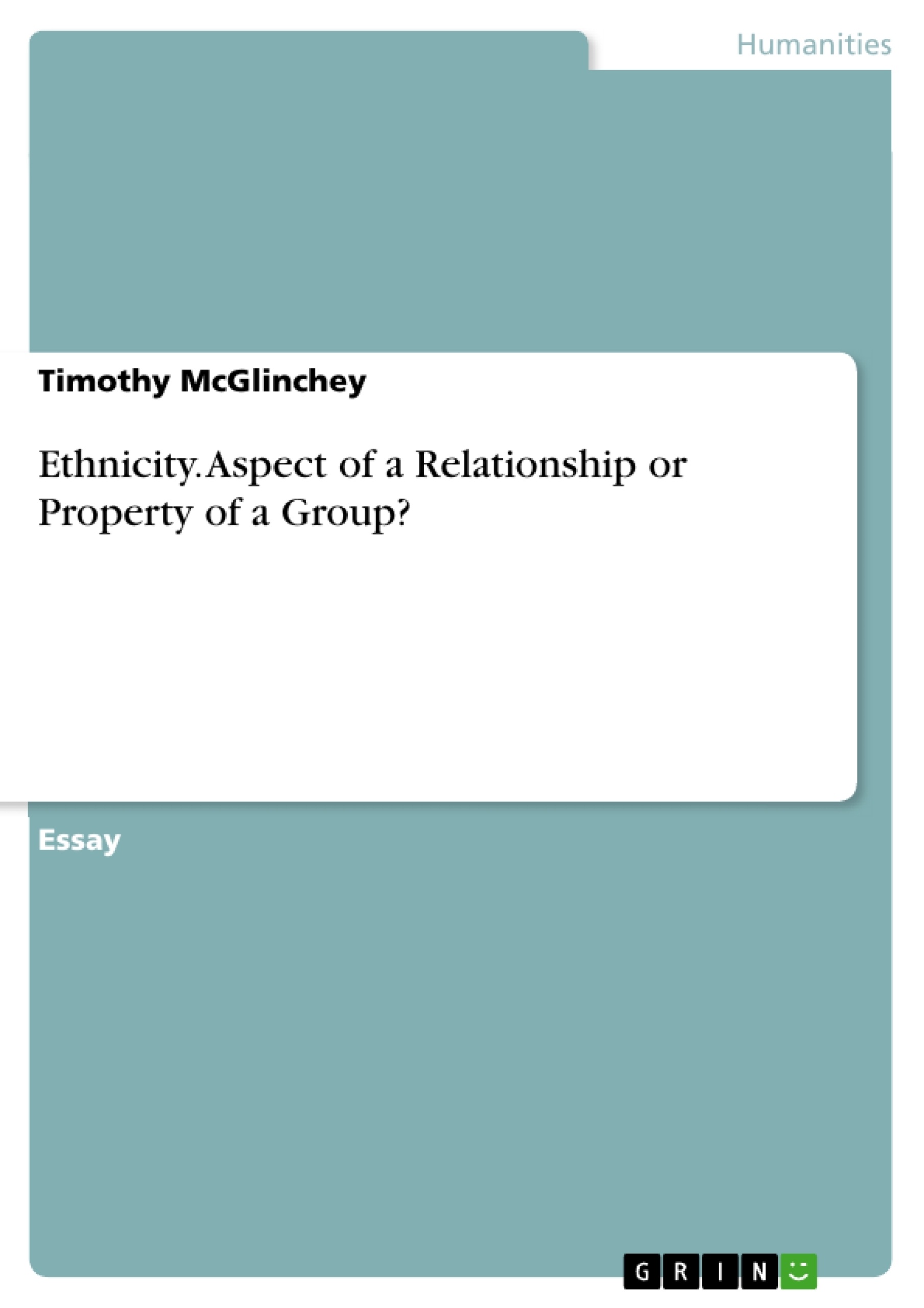In this essay, I intend to analyse Eriksen’s (2002) assertion that ethnicity is an aspect of a relationship, rather than a property of a group (2002:12), and do so in light of other relevant theories and issues in order to provide a critical discussion of the concept as a whole.
Since its introduction into the spectrum of anthropological discussion, the notion of ethnicity has been received with considerable debate and postulation. At a general level, however, it has been examined as an element closely related to, or even governing, broader areas such as cultural identity, nationalism, as well as individual and group identification.
Inhaltsverzeichnis (Table of Contents)
- Introduction
- Case Study: Mitchell's The Kalela Dance
- The Concept of Ethnicity
- Further Insights into Ethnicity
Zielsetzung und Themenschwerpunkte (Objectives and Key Themes)
This essay critically examines Eriksen's assertion that ethnicity is a relationship, rather than a property of a group. It analyzes the concept of ethnicity through various theoretical frameworks and case studies, aiming to provide a comprehensive discussion of its complexities and nuances.
- The relational nature of ethnicity
- The role of cultural difference and contact in shaping ethnic identities
- The importance of symbolic elements in defining ethnicity
- The influence of historical and social contexts on ethnicity
- The subjectivity and diversity of ethnic expressions
Zusammenfassung der Kapitel (Chapter Summaries)
The essay begins by introducing Mitchell's ethnography of the Kalela Dance, which focuses on the Bisa tribe in Northern Rhodesia. The study highlights the emergence of the dance as a response to colonial influence and the interplay of ethnic diversity and cultural contact.
The essay then delves into the concept of ethnicity, exploring Eriksen's anti-essentialist approach and examining key criteria for its existence, such as cultural difference and contact.
The final section explores further insights into ethnicity, drawing on the work of Schermerhorn and Nash to discuss the role of symbolic elements in defining group identity.
Schlüsselwörter (Keywords)
Ethnicity, cultural identity, relational perspective, anti-essentialism, symbolic elements, cultural difference, contact, colonialism, case studies, The Kalela Dance, Bisa tribe, Northern Rhodesia.
- Citar trabajo
- Timothy McGlinchey (Autor), 2015, Ethnicity. Aspect of a Relationship or Property of a Group?, Múnich, GRIN Verlag, https://www.grin.com/document/322773



